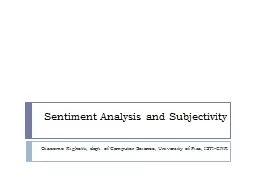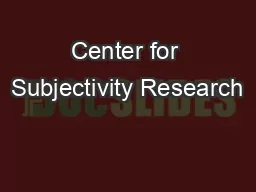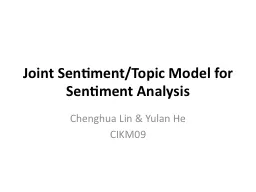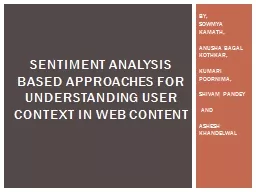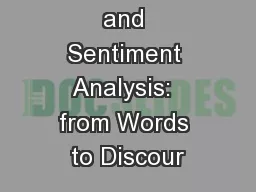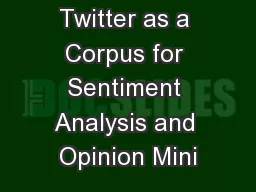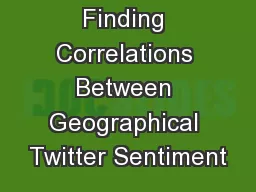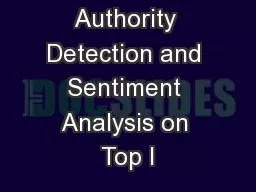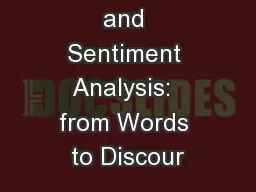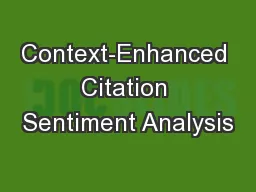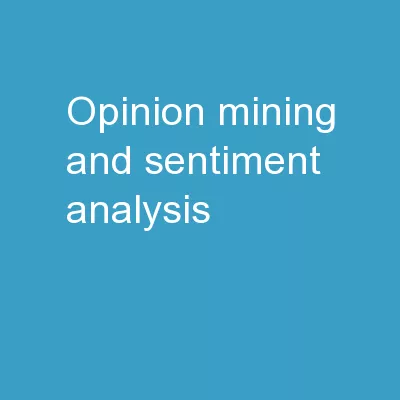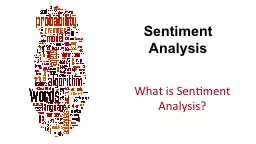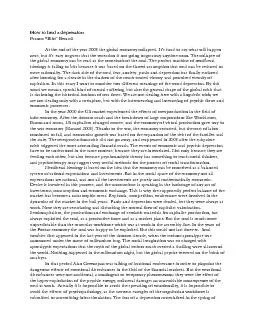PPT-Sentiment Analysis and Subjectivity
Author : giovanna-bartolotta | Published Date : 2017-05-24
Giacomo Righetti dept of Computer Science University of Pisa ISTICNR Agenda Part I Introduction Motivations and Issues User level informations Topics Part II Discussion
Presentation Embed Code
Download Presentation
Download Presentation The PPT/PDF document "Sentiment Analysis and Subjectivity" is the property of its rightful owner. Permission is granted to download and print the materials on this website for personal, non-commercial use only, and to display it on your personal computer provided you do not modify the materials and that you retain all copyright notices contained in the materials. By downloading content from our website, you accept the terms of this agreement.
Sentiment Analysis and Subjectivity: Transcript
Download Rules Of Document
"Sentiment Analysis and Subjectivity"The content belongs to its owner. You may download and print it for personal use, without modification, and keep all copyright notices. By downloading, you agree to these terms.
Related Documents

